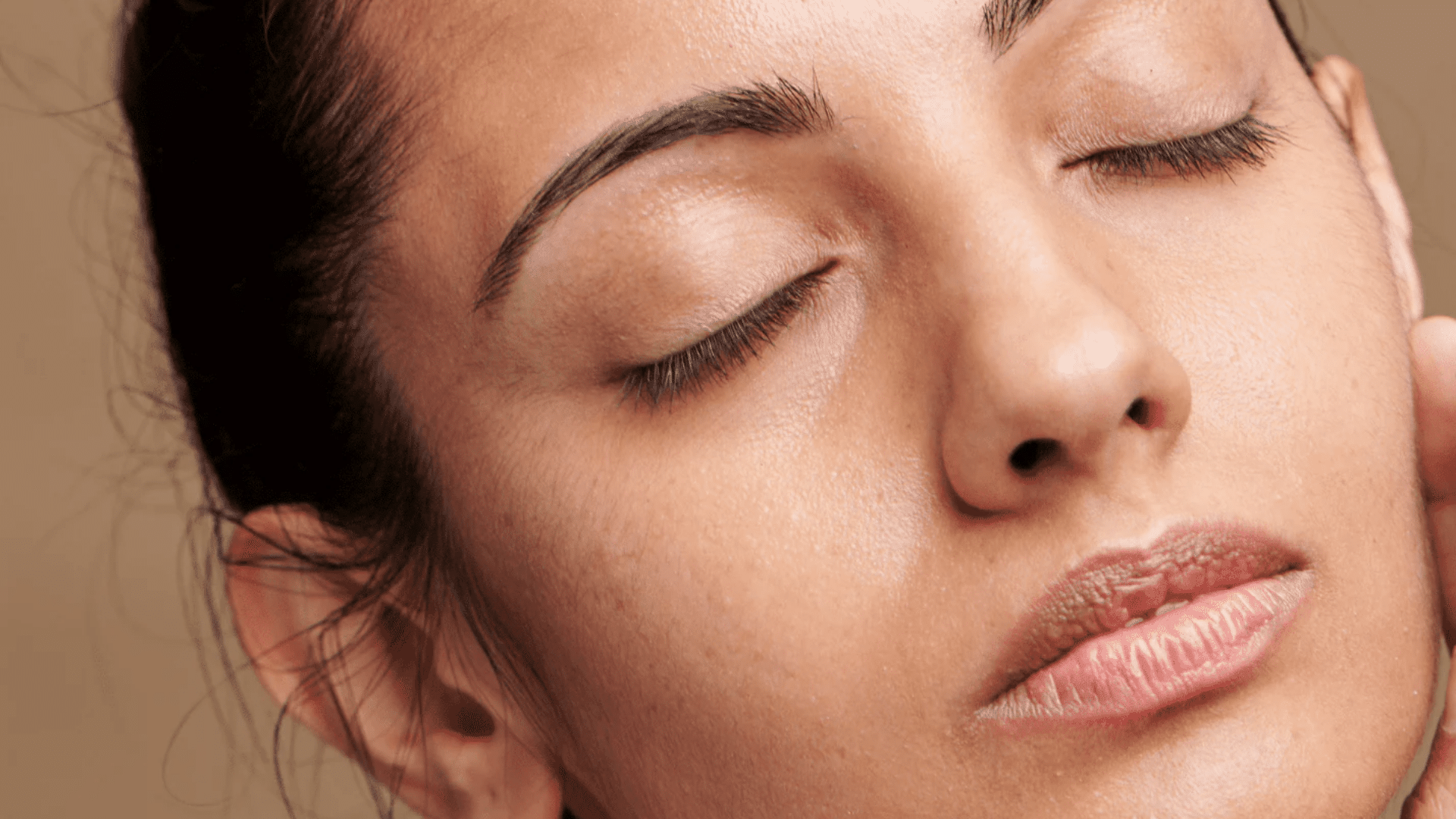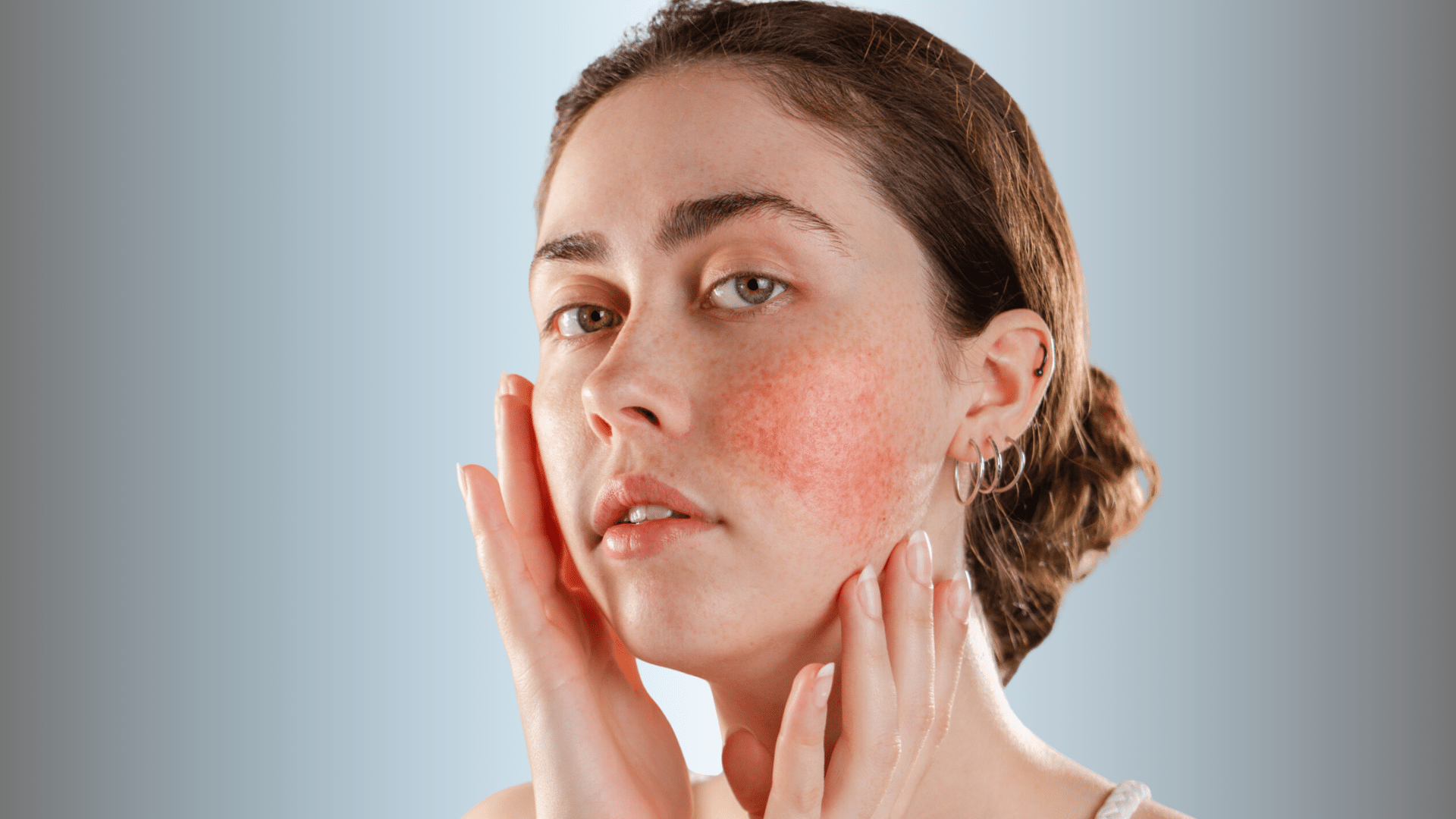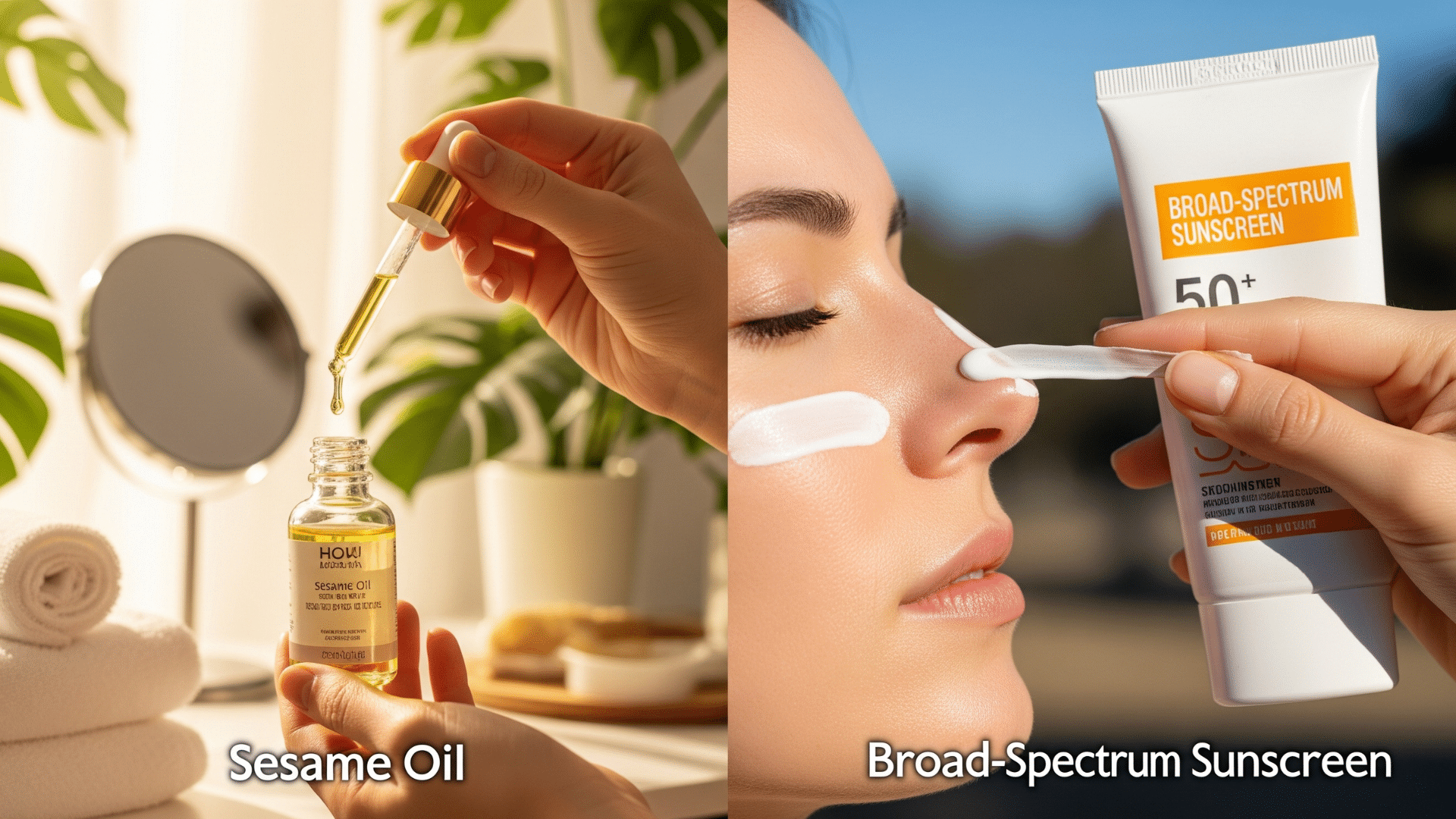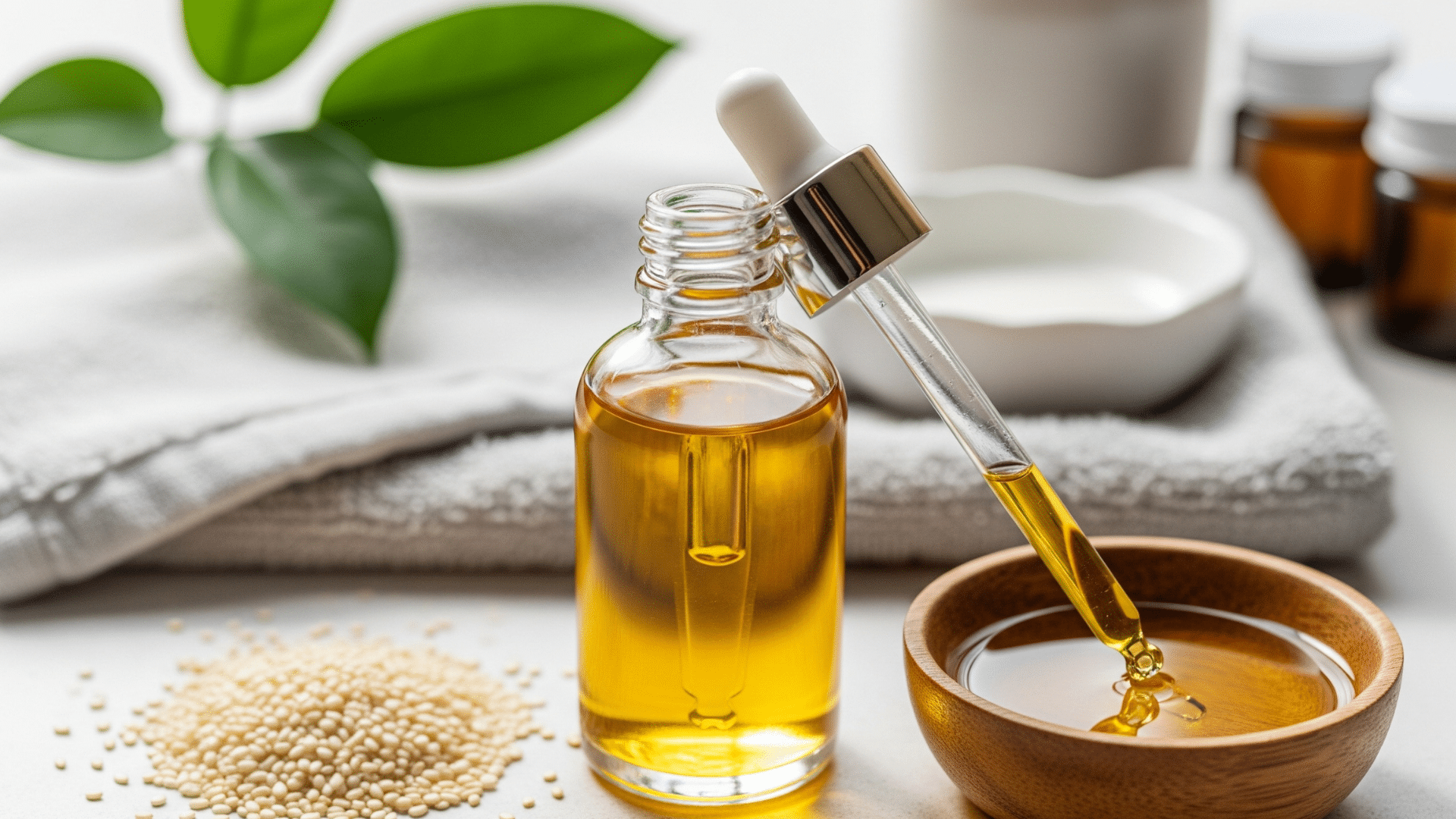Your skin doesn’t need complicated products to feel healthy; it just needs something that works for you. I’ve found sesame oil to be one of the most straightforward and most helpful things you can keep in your skincare routine.
If you’re dealing with dry patches, uneven tone, or just want something gentle that fits into your day, sesame oil might be the answer.
I’ll walk you through how I use it and how you can too. Want something easy, nourishing, and backed by real results? Keep reading, you might be surprised by how much it can help.
Skin Benefits of Sesame Oil
Sesame oil does more than just moisturize. It helps strengthen your skin barrier and keeps dryness away. It also fights free radicals, which may slow signs of aging like fine lines and sagging.
Its antibacterial and anti-inflammatory properties can calm redness, minor breakouts, and irritation.
While it offers some sun protection with a natural SPF of about 4, it’s not a replacement for sunscreen. Used regularly, sesame oil may also help fade dark spots and even out your skin tone.
Daily & Weekly Skincare Routines Using Sesame Oil
Use these simple routines to help your skin stay healthy and hydrated every day and every week.
| Day | Routine | Details |
|---|---|---|
| Daily | Morning Moisturizer & Barrier | Apply a few drops of sesame oil before sunscreen or mix it into your face cream to lock in moisture. Let it absorb before layering anything. |
| Nighttime Cleanse or Moisturize | Use sesame oil as a gentle cleanser or nighttime moisturizer after washing your face. Start with a small amount for oily skin. | |
| Layering Tip | Always let each product layer settle, and do a patch test if you have sensitive or acne-prone skin. | |
| 1× Weekly | Face Mask | Mix sesame oil with turmeric and yogurt or honey. Apply on clean skin for 10–15 minutes, then rinse off for smoother, more even skin. |
| 1× Weekly | Facial Scrub | Blend sesame oil with brown sugar and lemon juice. Gently massage your face and rinse. Do not scrub hard. Space out from the mask day. |
| 1× Weekly | Full-Body Massage | Warm sesame oil and massage from feet up using circular strokes. Leave on for 20–30 minutes, then rinse in a warm shower. Add essential oils for scent. |
How to Use Sesame Oil for Your Skin Type
I’ve seen how different skin types need different care, so here’s how you can use sesame oil the right way for yours.
Oily Skin


Refined sesame oil has a lower comedogenic rating, making it safer for oily or acne-prone skin. It absorbs well without feeling too greasy.
For breakout-prone areas, mix sesame oil with a small amount of tea tree oil or aloe vera. This helps calm inflammation while reducing bacteria.
Avoid applying too much or leaving it on overnight until tolerance is known. Spot treatments are often more effective than full-face use on oilier skin.
Dry Skin


Unrefined, cold-pressed sesame oil works best for dry or flaky skin. Its thicker texture provides deep hydration and helps lock in moisture.
It can be applied directly after washing or blended with nourishing ingredients like shea butter. Using it under a sleeping mask or heavier cream at night enhances results.
Regular use helps reduce tightness and supports a more substantial skin barrier. Always use on damp skin to improve absorption and prevent that heavy or sticky feeling.
Sensitive Skin


Sensitive skin requires extra caution, especially with oils. Always begin with a patch test on a small area before applying to the whole face.
Refined sesame oil is typically milder, but blending it with calming ingredients like chamomile or calendula can reduce the chance of irritation. Use small amounts and avoid essential oils unless proven safe.
Limit use to 2–3 times per week at first. If redness, itching, or stinging occurs, stop use immediately and reassess.
Combination Skin


Combination skin needs balance. Sesame oil can be used on dry areas while avoiding the oily T-zone. It works well as a massage oil 2–3 times a week to improve skin texture and hydration.
Apply a light layer to cheeks or jawline where dryness is common. Avoid applying heavy products to the forehead or nose if you have clogged pores. Pair with a non-comedogenic moisturizer to maintain balance. Rotate use based on how each area responds.
Targeted Solutions for Common Skin Concerns
I’ve tested these easy fixes myself, and you can use them too when sesame oil alone isn’t enough for stubborn skin issues.
1. Acne & Blemishes
Aloe vera blended with sesame oil creates a soothing spot treatment for inflamed areas. Adding a drop of tea tree or turmeric oil may help reduce bacteria and calm redness.
This combination can support clearer-looking skin without stripping moisture. Always test essential oils in small amounts, and avoid applying to open wounds or raw spots to prevent further irritation or sensitivity.
2. Dry Patches & Eczema
Sesame oil mixed with calendula or vitamin E offers deep moisture and can help soothe dry, flaky patches. This blend works best when applied right after a shower, while the skin is still damp.
It helps lock in hydration and may ease discomfort from itchiness. Apply gently to rough areas and allow it to absorb naturally before layering with heavier creams if needed.
3. Wrinkles & Fine Lines
A blend of sesame oil, rosehip oil, and vitamin E is often used as a nighttime facial oil. This mixture may support smoother texture and improved skin elasticity.
Massage a few drops gently into clean skin before bed, focusing on areas prone to wrinkles. Avoid tugging the skin and allow the oils to absorb fully. Regular use may help soften fine lines over time.
4. Sun Damage & Tanning
A homemade sandalwood and sesame oil mask can cool and calm sun-exposed skin. This mix may help reduce heat, support tone recovery, and ease mild redness or tanning.
Use on clean skin and leave it on for 10–15 minutes before rinsing. Always follow with a broad-spectrum SPF during the day, since sesame oil’s natural sun protection is not strong enough on its own.
5. Uneven Tone or Pigmentation
Turmeric, yogurt, or licorice extract can be combined with sesame oil to target areas of discoloration. This spot treatment may help reduce visible marks or uneven tone when used regularly.
Apply to clean skin, let it sit for several minutes, then rinse gently. Limit use to 2–3 times a week and avoid leaving it on too long, especially if skin is sensitive or easily stained.
Best Sesame Oils for Skincare
When shopping for sesame oil for your skin, always look for labels that say “100% pure,” “cold-pressed,” or “organic.” These options retain more nutrients and are safer for sensitive skin.
Avoid oils with added fragrance or fillers. Dark glass bottles help protect the oil from light damage and extend shelf life. You can find quality sesame oil at natural food stores, Ayurvedic shops, or online retailers.
Check ingredient lists carefully, and choose brands that keep the formula simple and free from unnecessary additives.
DIY Recipes Using Sesame Oil
I’ve tried these simple blends myself, and you can use them too to give your skin natural care without added chemicals.
Brightening Face Mask
You can brighten dull skin naturally with this simple sesame oil mask that combines three common ingredients found in most kitchens.
- Mix 1 tsp sesame oil with 1 pinch turmeric and 1 tsp honey
- Apply to clean skin for 10–15 minutes
- Rinse gently with lukewarm water
- Use 2x per week
- Always do a patch test before applying
This mask may improve uneven tone while keeping your skin soft, but avoid using turmeric too often if you have sensitivity.
Exfoliating Body Scrub
Give your skin a weekly refresh using this gentle sesame oil scrub that smooths rough patches without harsh chemicals or ingredients.
- Mix 1 tbsp sesame oil + 2 tbsp brown sugar + zest from half a lemon
- Massage in gentle circles onto damp skin
- Focus on dry spots like knees and elbows
- Rinse thoroughly with warm water
- Avoid using on broken or irritated skin
Use this scrub weekly to remove dead skin and boost softness, and always follow with a light moisturizer afterward.
Anti-Aging Facial Oil Blend
This overnight blend is a simple way to hydrate your skin and may help reduce fine lines when used consistently.
- Mix 2 parts sesame oil + 1 part rosehip oil + 1 vitamin E capsule
- Store in an amber glass dropper bottle
- Use 1–2 drops at night on clean skin
- Shake before each use
- Apply gently and avoid tugging the skin
This blend can last up to two months if stored well, and it works best when layered under your usual night cream.
Storage & Shelf Life
To keep your sesame oil fresh and safe for use, it’s essential to store it properly and avoid light or heat exposure.
- Store in a dark, cool place away from sunlight
- Refrigerate for a longer shelf life
- Use dark or amber glass containers
- Shelf life: 6–9 months when stored properly
- Discard if the smell or color changes
Check oils before each use and store all DIY blends safely to make sure they stay effective and skin-friendly longer.
Sesame Oil vs Other Natural Oils
If you’re not sure which oil fits your skin best, this table helps you compare sesame oil with other standard options.
| Oil | Absorbency | Comedogenic Rating | Best For | Key Benefit |
| Sesame | Medium | 1–3 | Dry to normal skin | Antioxidant-rich |
| Jojoba | Fast | 1 | Oily/acne-prone | Mimics sebum |
| Coconut | Slow | 4 | Dry skin | Deep hydration |
| Almond | Medium | 2 | Sensitive/combination | Soothing |
| Argan | Fast | 0–1 | All skin types | Anti-aging |
Choosing the right oil depends on your skin needs. Always test new oils slowly to see how your skin responds over time.
SPF Reality Check: Sesame Oil


Sesame oil does provide some sun protection, but it’s very limited, roughly equal to SPF 4. That’s not strong enough to protect your skin from harmful UV rays on its own.
You should never use sesame oil as a sunscreen substitute. However, it can work well as a nourishing base under your regular SPF.
Its antioxidant content may support skin exposed to sunlight, but it won’t block UVA or UVB effectively. Always apply broad-spectrum sunscreen over it before heading outside.
Warnings, Allergies, and When to Avoid Sesame Oil
Even natural oils can cause problems. Here’s what you need to know before adding sesame oil to your daily skincare routine:
- Who should avoid it: Those with sesame or nut allergies
- How to patch test: Dab on inner forearm for 24 hours
- Signs of irritation: Redness, itching, breakouts
- When to stop using: Persistent acne, allergic rash, clogged pores
- Pro tip: Start with refined oil if you’re unsure
Conclusion
Now you know how sesame oil for skin can make a difference without adding stress to your routine.
I’ve seen how it softens, soothes, and supports my skin, and you can experience the same when you find the proper method for your needs.
If you try it as a night oil, a mask, or a body massage, it’s about using what fits your skin best. Just start small, be consistent, and pay attention to how your skin responds.
Want more down-to-earth skincare ideas like this? Stick around, I’ve got more simple tips that work for you.











